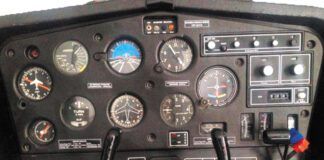Can You See Me Now?
The minimum vectoring altitude near my home ‘drome is about 3000 feet MSL because of our distance from the radar site. That’s higher than the 2000-foot crossing at the FAFs so we always get cleared for a full approach. However, our ADS-B reception is currently around 1000 feet MSL/700 AGL.
After 2020, when the traffic picture is nearly full via ADS-B and closer to the ground, do you foresee MVAs being lowered in areas that have been limited primarily by poor radar coverage?
What division at the FAA would be responsible for making MVA changes? It would seem to be a big job to adjust them due to variable ADS-B traffic reception by altitude, obstacles, and controller needs.
Justin Graff
Tupelo, MS
Fred Simonds, our ADS-B and NextGen guru, replies:
My thought is MVAs will ultimately be adjusted for ADS-B coverage, because the use of radar in its current form will be deprecated and give way to ADS-B. In other words, ADS-B targets will be shown instead of Mode A or C transponder replies. That would certainly make life easier for you. Part of ADS-B’s purpose is to provide ATC coverage that radar cannot, as in your case.
I’m sure it will be a big task and not the only one that needs tweaking to accommodate ADS-B. Another initial obstacle might be inertia—some facilities might find it difficult to adjust to ADS-B.
Presently, the TRACON sets the MVA for their airspace, so you might want to contact them to see if they’ve given this as much thought as you have.
Call Sign Duplication
As I recently followed a friend who was connecting commercially through JFK, I noticed that both the late inbound and on-time outbound flights had the same flight number. This suggested to me that ATC might have been working two aircraft with the same call sign, United 99, for example. How do controllers deal with this ambiguity?
Gilead Wurman
Palo Alto, CA
The ATC call sign used by an airliner often isn’t the same as the marketing flight number. So, hypothetically, one iteration of UA99 might have a call sign of “UA99” while another might have a call sign of “UA492X.”
Vague Drotams
With all the drone NOTAMs showing up you’d think there’d be some more information than a lat/lon, radius and altitude. Some have numbers like CLE 06/177 but others don’t. Is there any way to know who filed these?
Bruce Bream
Beachwood, OH
Elaine Kauh replies:
Most UAS NOTAMs will be filed by a commercial operator who has received an FAA exemption to legally fly their drones. They have been instructed under conditions of the exemption to file their notices with Flight Service well prior to operation, which is why there are so many UAS NOTAMs posted around the country.
The name of the filing party is not published with any NOTAMs. (Only TFRs come with some kind of general contact information, but still are not specific.) In some cases the manager of an affected airport will know the purpose of the notice and who filed it. The NOTAM format always has the name of the affected facility, followed by the month of issuance (06) and a sequence number (no. 177), then the affected ARTCC (ZOB, Cleveland Center).
Great Controllers
This happened to me a couple of years ago. I was on a VFR flight from St. George, UT (KSGU) to Long Beach, CA (KLGB) with flight following, and all of a sudden Los Angeles Center advised they lost my transponder. I tried several things with no luck. I requested to continue the flight and it was approved with info to advise the next controller. When I was handed off to So Cal Approach I informed the controller of my problem, and he came back with, “OK, we’ll do this the old way. Turn right, heading ABC and then left, heading XYZ.” The way the controller handled me even in the busy LA basin was really soothing.
Wayne Clark
Grand Junction, Co
Good story, Wayne.
I’ve got many hundreds of hours in SoCal airspace and while it can get downright frantic at times, I’ve never heard controllers lose their cool, their professionalism, their friendliness or their sense of service. There’s no other busy airspace I’d rather fly in. —FB
Back Course Confusion
I don’t agree with one of your rules in “Reverse Sensing—HSI” in July. You state in Rule #3, “If you are inbound on the back course or outbound on the front course, the shaded part of the feather is on your left, so you correct by steering away from the CDI.” In 45 years of flying I have never paid much attention to the shading of the feather but looking at it now I kind of see what you are trying to say.
If you are navigating along the front course, regardless of whether you are inbound to the runway or outbound from the runway, the CDI shows normal sensing; CDI displaced left, steer left to center the CDI. It is confusing to say, “If you are…outbound on the front course…you correct by steering away from the CDI.”
Localizers are oriented in one direction and we call the magnetic direction of that orientation the “front course.” If a pilot is attempting to fly along the localizer in approximately the same direction as the localizer is oriented, he is said to be flying the front course. He is inbound on the front course when the transmitter is in front of him. Once he passes the transmitter he is outbound on the front course and the CDI continues to provide normal sensing.
If the pilot is attempting to fly along the localizer in the opposite direction of its orientation, he is flying the back course. If the transmitter is ahead of him he is inbound on the back course. If he continues past the transmitter he is then outbound on the back course. The CDI will show reverse sensing regardless of whether he is inbound on the back course or outbound on the back course.
Steve Bosshard
Midlothian, VA
No, it was said correctly. If you’re in the shaded portion of the localizer depiction, you’ll get a left needle deflection. Period. If you’re on a conventional localizer approach (inbound on the front course, headed toward the runway and the localizer) correct to the left to get back on course.
However, reverse your course so you’re in exactly the same place but headed away from the airport. You’re still on the front course, just headed the “wrong” way. Just like a VOR doesn’t know/care about your heading, the conventional VOR/LOC needle will still be to the left, but now since you’re headed the other way, you have to correct to the right to get back on course.
The only thing we seem to disagree on is the definition of front course and back course. If you’re headed inbound to the runway on a “normal” localizer approach (front course), turning around doesn’t magically mean you’re now on the back course.
For confirmation look at the Reno, NV (KRNO) ILS 16R approach and the WAGGE SIX departure (provided at the top right of this page). The departure uses the continuation of the front course as you fly away from the airport, but it is labeled the back course.
We read ‘em all and try to answer most e-mail, but it can take a month or more. Please be sure to include your full name and location. Contact us at [email protected].




